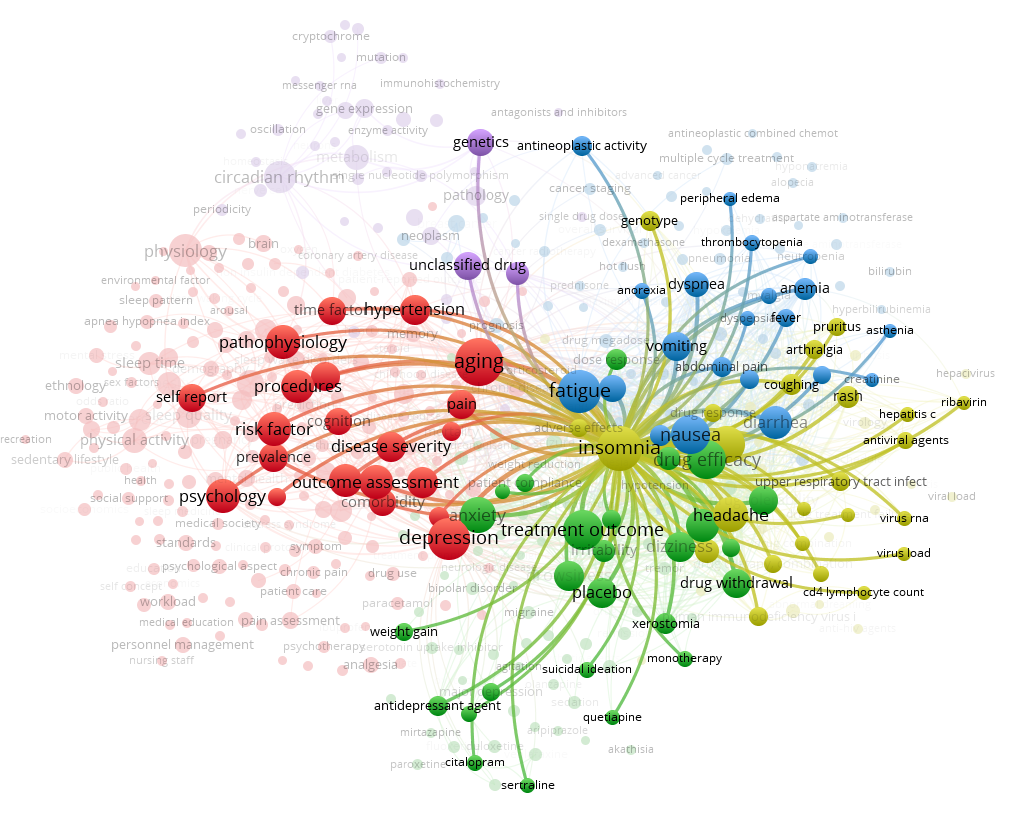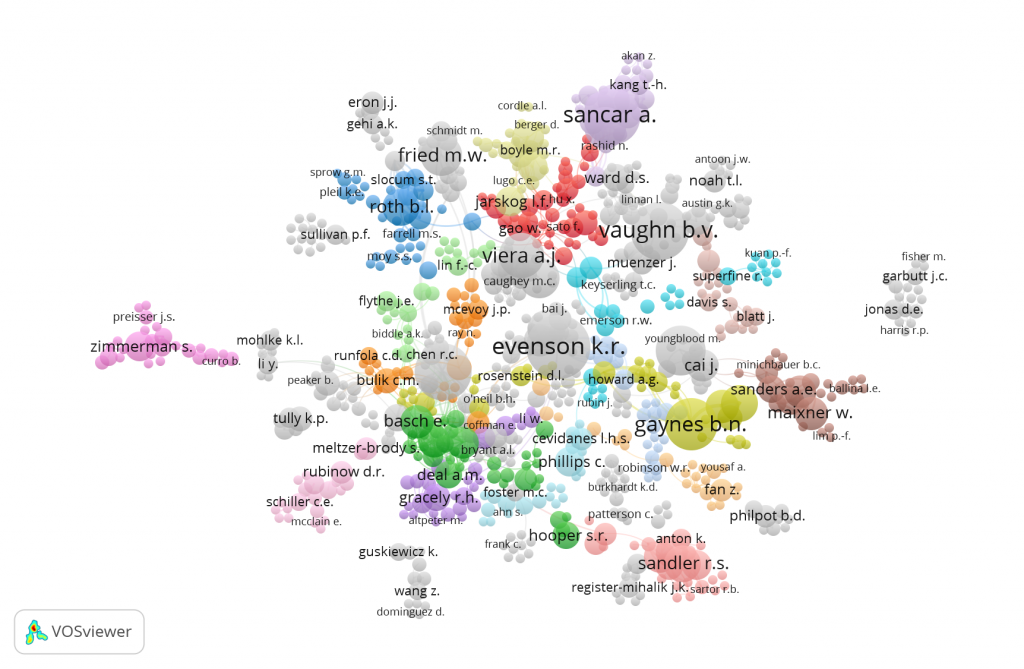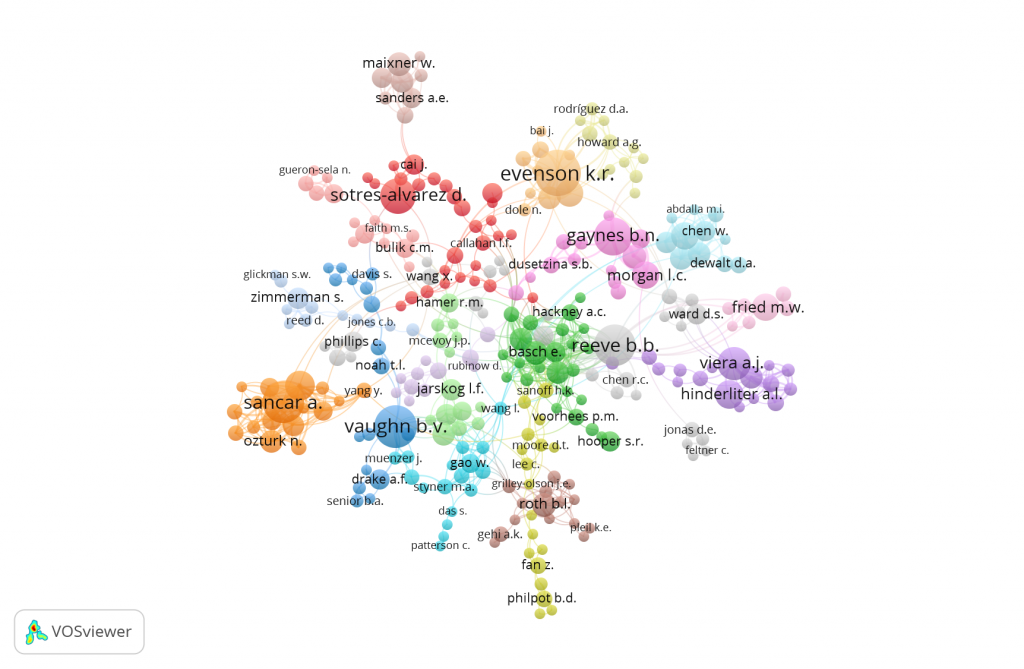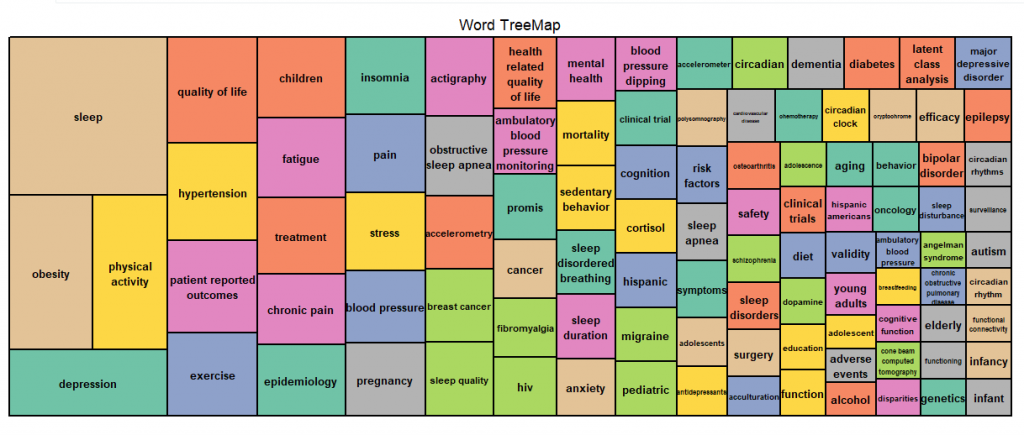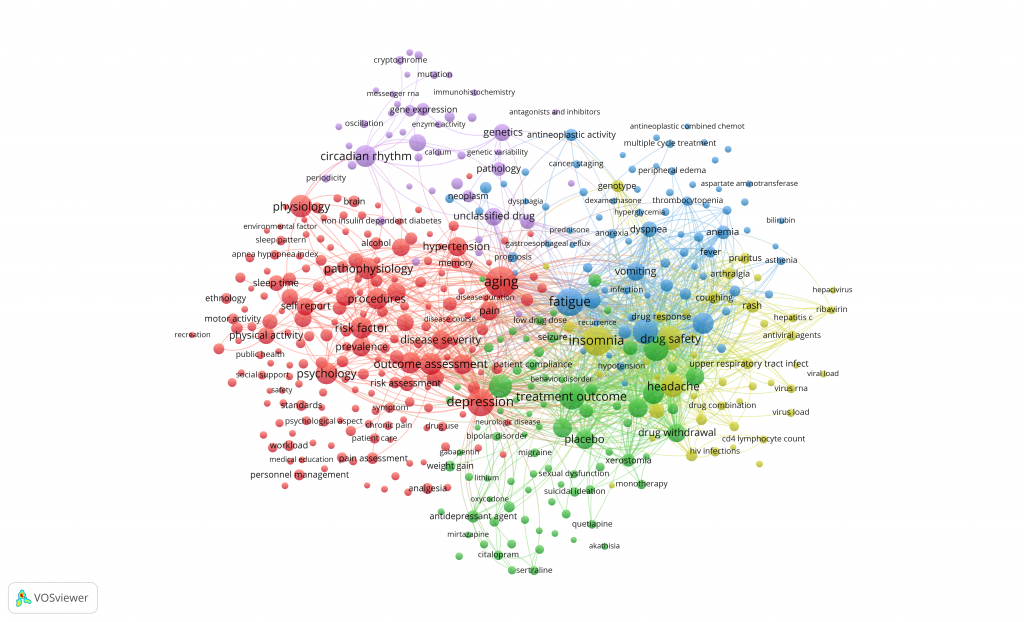HSL partnered with research administrators in the Office of Research Development (ORD), the Department of Allied Health Sciences Department (DAHS), and the Department of Neurology (Neurology) on an initial exploratory analysis of 10 years of UNC-CH authored sleep research citations. An analysis of authors assisted ORD, DAHS, and Neurology research administrators in identifying additional UNC-CH faculty engaged in sleep research across campus units to invite to future UNC-CH sleep research symposia. Author and topic network analyses were performed to illustrate collaboration patterns among UNC-CH sleep researchers and the top areas of research focus. HSL staff were invited to present a brief introduction to these analyses at the October 2019 symposium and to present in more depth at the March 2020 event.
Dataset
Our team developed and conducted a comprehensive search of the Scopus database for sleep research articles with UNC-CH-affiliated authors. A total of 1128 publications covering publication years 2010-2019 were retrieved and included in the analyses. A Python script was used to extract UNC-CH author names from the publication citations and Excel was used to compare these UNC-CH author names to an existing contact list of UNC-CH sleep researchers, as well as to a list of current UNC-CH employees in order to identify additional active UNC-CH sleep investigators. VOSviewer, an open-source bibliometric analysis tool, and Bibliometrix, a programming package written in R, were used to produce co-author and topic analyses and generate visualizations for the sleep symposia presentations.
Deliverables
For the co-author analysis, networks were constructed based on UNC-CH author collaboration. Two versions of the author networks were produced, one with all authors with 1 or more publications included and a second with all authors with 2 or more publications included. For each co-author network, only connected authors were included. Each node in the network map represents a UNC-CH researcher. The size of each node represents the number of articles for a given author. Network clusters are based on co-authorship links, and are assigned by application algorithms. Proximity of nodes reflects the relational connectivity of any two authors.
Figure 1. Author Network: 787 Connected UNC-CH Authors Only with 1 or More Publications, 2010-2019
Figure 2. Author Network: 299 Connected UNC-CH Authors Only with 2 or More Publications, 2010-2019
For the topic analysis, we examined the top 100 author-assigned keywords from the sleep publications using Bibliometrix, producing a Treemap visualization. Additionally we analyzed index terms assigned to the publications using VOSviewer. Index terms were normalized to address variation in singular/plural forms. Commonly occurring index terms related to study methods or subjects (e.g. humans) were also removed. For this quick turnaround, exploratory analysis, terms were not reviewed by domain experts in DAHS and Neurology and this step is planned for future analysis rounds. Once all index terms were compiled, a term threshold of 10 or more occurrences was applied to restrict the number of terms included in topic network visualization.
Figure 3. TreeMap of Top 100 Author Keywords, 2010-2019
Figure 4. Topic Network: 437 Index Keywords with 10 or More Occurrences, 2010-2019
Results
The team completed author collaboration and topic analyses for UNC-CH sleep research principals and prepared presentations on the findings for two sleep research symposia. The COVID-19 pandemic closed the UNC campus in March 2020 shortly after the March 2020 sleep symposium and unit priorities across campus shifted dramatically. Prior to the necessary pandemic response across campus, DAHS research administrators had expressed appreciation for the initial analyses and presentations and followed up with questions about other analysis possibilities.They also expressed keen interest in additional analyses of UNC-CH sleep research.
